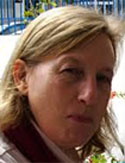The Detail in Seymour Hersh’s Bin Laden Story That Rings True

By Carlotta Gall
May 12, 2015
From the moment it was announced to the public, the tale of how Osama bin Laden met his death in a Pakistani hill town in May 2011 has been a changeable feast. In the immediate aftermath of the Navy SEAL team’s assault on his Abbottabad compound, American and Pakistani government accounts contradicted themselves and each other. In his speech announcing the operation’s success, President Obama said that “our counterterrorism cooperation with Pakistan helped lead us to Bin Laden and the compound where he was hiding.”
But others, including top Pakistani generals, insisted that this was not the case. American officials at first said Bin Laden resisted the SEALs; the Pakistanis promptly leaked that he wasn’t armed. Then came differing stories from the SEALs who carried out the raid, followed by a widening stream of new details from government reports — including the 336-page Abbottabad Commission report requested by the Pakistani Parliament — and from books and interviews. All of the accounts were incomplete in some way.
The latest contribution is the journalist Seymour Hersh’s 10,000-word article in The London Review of Books, which attempts to punch yet more holes — very big ones — in both the Obama administration’s narrative and the Pakistani government’s narrative. Among other things, Hersh contends that the Inter-Services Intelligence directorate, Pakistan’s military-intelligence agency, held Bin Laden prisoner in the Abbottabad compound since 2006, and that “the C.I.A. did not learn of Bin Laden’s whereabouts by tracking his couriers, as the White House has claimed since May 2011, but from a former senior Pakistani intelligence officer who betrayed the secret in return for much of the $25 million reward offered by the U.S.”
On this count, my own reporting tracks with Hersh’s. Beginning in 2001, I spent nearly 12 years covering Pakistan and Afghanistan for The Times. (In his article, Hersh cites an article I wrote for The Times Magazine last year, an excerpt from a book drawn from this reporting.) The story of the Pakistani informer was circulating in the rumor mill within days of the Abbottabad raid, but at the time, no one could or would corroborate the claim. Such is the difficulty of reporting on covert operations and intelligence matters; there are no official documents to draw on, few officials who will talk and few ways to check the details they give you when they do.
Two years later, when I was researching my book, I learned from a high-level member of the Pakistani intelligence service that the ISI had been hiding Bin Laden and ran a desk specifically to handle him as an intelligence asset. After the book came out, I learned more: that it was indeed a Pakistani Army brigadier — all the senior officers of the ISI are in the military — who told the C.I.A. where Bin Laden was hiding, and that Bin Laden was living there with the knowledge and protection of the ISI.
I trusted my source — I did not speak with him, and his information came to me through a friend, but he was high enough in the intelligence apparatus to know what he was talking about. I was confident the information was true, but I held off publishing it. It was going to be extremely difficult to corroborate in the United States, not least because the informant was presumably in witness protection.
I do not recall ever corresponding with Hersh, but he is following up on a story that many of us assembled parts of. The former C.I.A. officer Larry Johnson aired the theory of the informant — credited to “friends who are still active” — on his blog within days of the raid. And Hersh appears to have succeeded in getting both American and Pakistani sources to corroborate it. His sources remain anonymous, but other outlets such as NBC News have since come forward with similar accounts. Finally, the Pakistani daily newspaper The News reported Tuesday that Pakistani intelligence officials have conceded that it was indeed a walk-in who provided the information on Bin Laden. The newspaper names the officer as Brigadier Usman Khalid; the reporter is sufficiently well connected that he should be taken seriously.
This development is hugely important —it is the strongest indication to date that the Pakistani military knew of Bin Laden’s whereabouts and that it was complicit in hiding a man charged with international terrorism and on the United Nations sanctions list.
I cannot confirm Hersh’s bolder claims — for example, that two of Pakistan’s top generals, Ashfaq Parvez Kayani, the former army chief, and Ahmed Shuja Pasha, the director of the ISI, had advance knowledge of the raid. But I would not necessarily dismiss the claims immediately. Hersh’s scenario explains one detail that has always nagged me about the night of Bin Laden’s death.
After one of the SEALs’ Black Hawk helicopters crashed in Bin Laden’s Abbottabad compound, neighbours called the police and reported hearing both the crash and the subsequent explosions. The local police told me that they received the calls and could have been at the compound within minutes, but army commanders ordered them to stand down and leave the response to the military. Yet despite being barracked nearby, members of the Pakistani Army appear to have arrived only after the SEALs — who spent 40 minutes on the ground without encountering any soldiers — left.
Hersh’s claim that there was little or no treasure trove of evidence retrieved from Bin Laden’s home rings less true to me. But he has raised the need for more openness from the Obama administration about what was found there.
Carlotta Gall is the North Africa correspondent for The New York Times and the author of “The Wrong Enemy: America in Afghanistan 2001-2004.”
Source: http://www.nytimes.com/2015/05/12/magazine/the-detail-in-seymour-hershs-bin-laden-story-that-rings-true.html?em_pos=small&emc=edit_ma_20150515&nl=magazine&nlid=71783194&ref=headline&_r=0

No comments:
Post a Comment